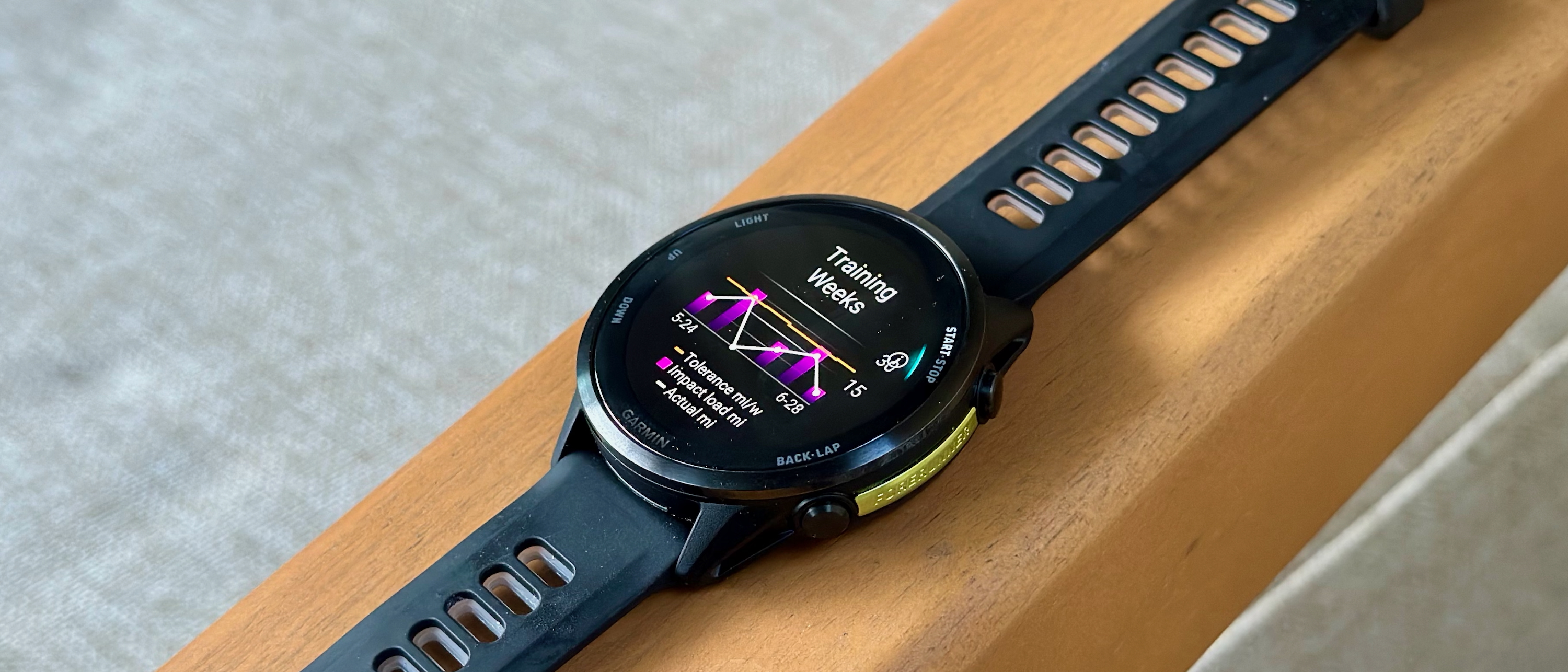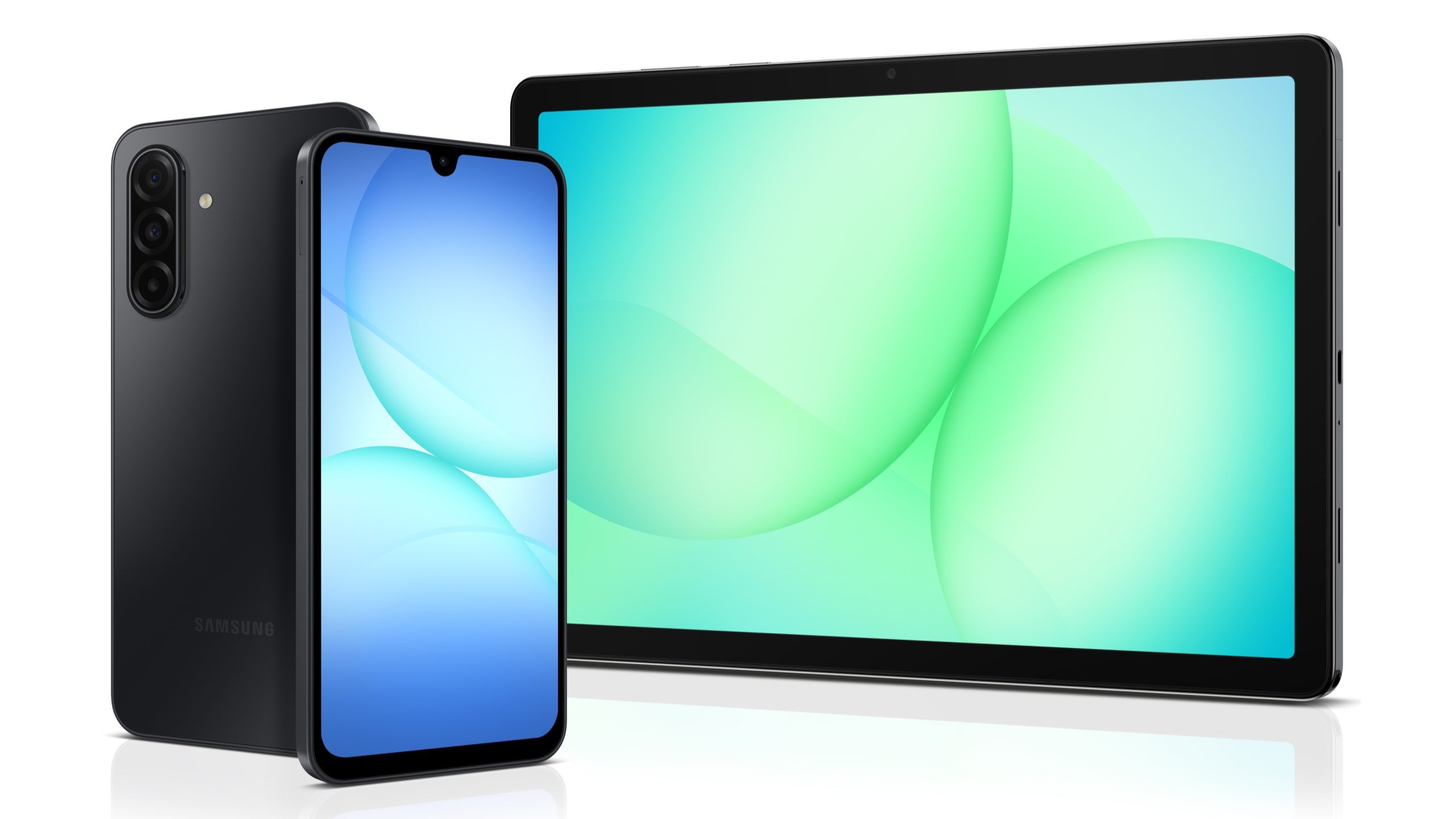Android Central Verdict
The Forerunner 970 costs $150 more than the already-pricey 965, but it added so many new perks — and held back the Forerunner 570 enough — that you'll still be seriously tempted. This is a fantastic training tool for serious runners; unfortunately, its new Fenix-esque smarts are fairly basic, but at least you're paying $750 instead of $1,100 for them.
Pros
- +
Running tolerance and impact load
- +
Doubled display brightness
- +
Adds ECG, flashlight, mic/ speaker
- +
Top-class HR/ GPS/ step accuracy
- +
15-day battery life
- +
Comfortable weight, thickness
Cons
- -
Very expensive
- -
Rudimentary voice assistant
- -
Laggy maps
Why you can trust Android Central
The Garmin Forerunner 970 is the brand's most painfully expensive running watch yet. As someone who gave the Forerunner 965 an unreserved perfect score in 2023, I had sky-high expectations for its successor — as will anyone who sees that $750 price tag.
For Garmin fans, they may see the Forerunner 970 as a more affordable Fenix 8 47mm. For $350 less, you get a twice-as-bright display, a half-ounce lighter design, the same new perks like Bluetooth calling, ECGs, and a flashlight — pretty much everything except the dive-proof metal case, extra battery, and premium golf tools.
For everyone else, the Forerunner 970 will look overpriced; its pro fitness tools are available at lower tiers, and its smarts and apps are limited compared to the Apple Watch Ultra 2.
Should runners downgrade to the Forerunner 570, give the 970 a try, or skip them both for an older Garmin that's discounted for Prime Day?
Having spent over a month taking the Garmin Forerunner 970 on dozens of runs, I can wholeheartedly recommend it! But only you can decide if its training suite is overkill or if you'd be happier with a cheaper, smarter fitness watch.
Garmin Forerunner 970: Price, availability, and specs
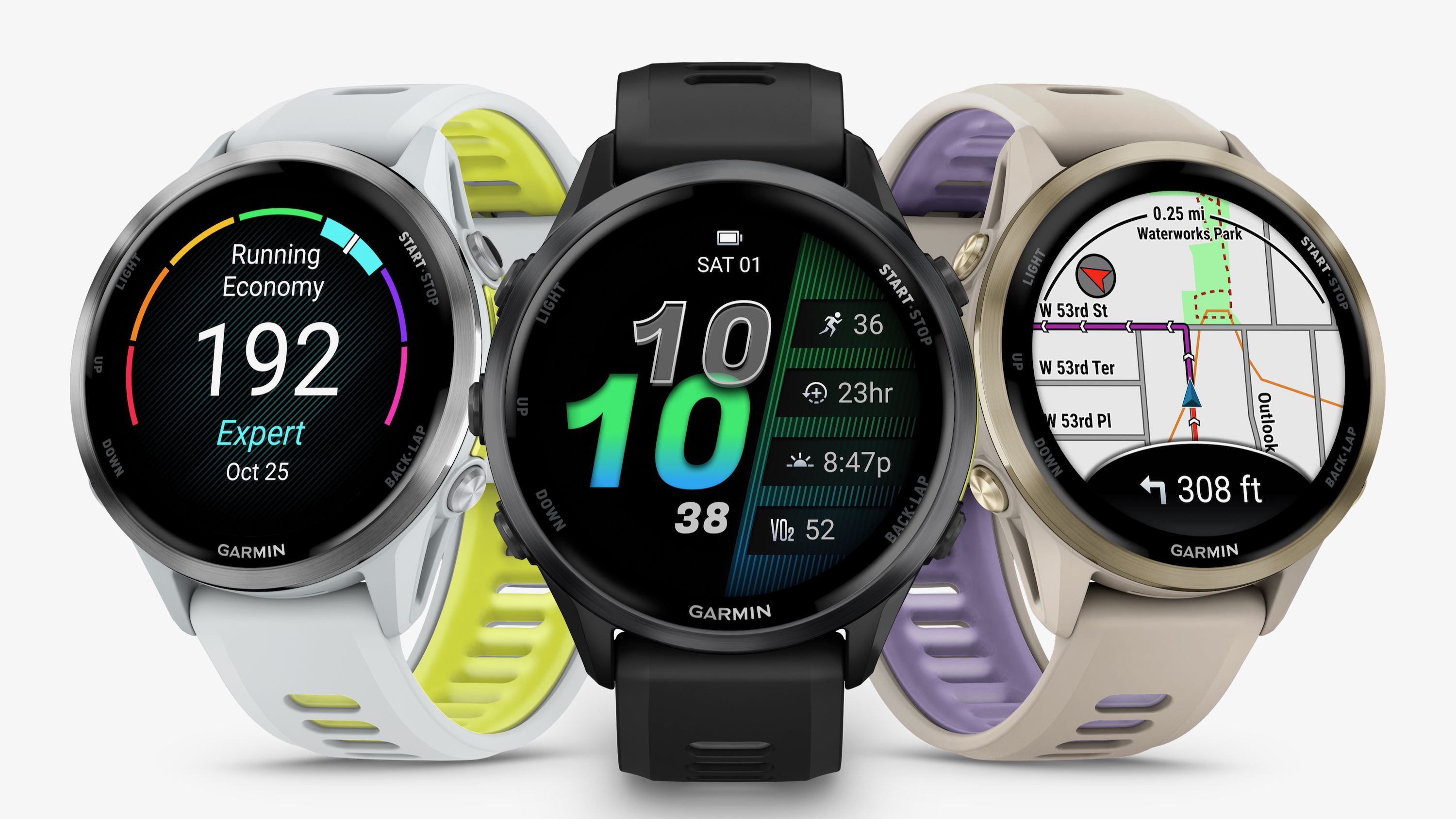
Revealed in May 2025, the Garmin Forerunner 970 launched at $749.99 in one 47mm case size. It ships in three colors: Black with a Carbon Gray bezel and Black / Whitestone band, Whitestone with a Titanium bezel and Whitestone / Amp Yellow band, or French Gray with a Soft Gold bezel and French Gray / Indigo band.
Replacement QuickFit bands cost anywhere from $50 for silicone to $300 for leather, nylon, or metal. Unlike Quick Release bands, there are limited third-party straps, and QuickFit requires a special tool to swap them out. Be prepared to stick with the default option.
Get the latest news from Android Central, your trusted companion in the world of Android
Category | Garmin Forerunner 970 specs |
|---|---|
Size | 47 x 47 x 12.9mm, 22mm QuickFit band |
Weight | 56 g |
Materials | Titanium bezel, polymer case, silicone strap |
Protection | 5ATM, sapphire glass |
Display | 1.4" (454x454) AMOLED touchscreen |
Battery life | 15 days, 23 hours (SatIQ GPS), 14 hours (multi-band GPS w/ music) |
Storage | 32GB |
Sensors | Elevate v5 HRM, SpO2, accelerometer, altimeter, compass, gyroscope, ECG, skin temperature |
Tracking | GPS, GLONASS, GALILEO, BeiDou, QZSS, SatIQ, multi-band GPS |
Connectivity | Bluetooth, ANT+, NFC |
Flashlight | ✔️ |
Mic & speaker | ✔️ |
Garmin Forerunner 970: Design, display, & flashlight
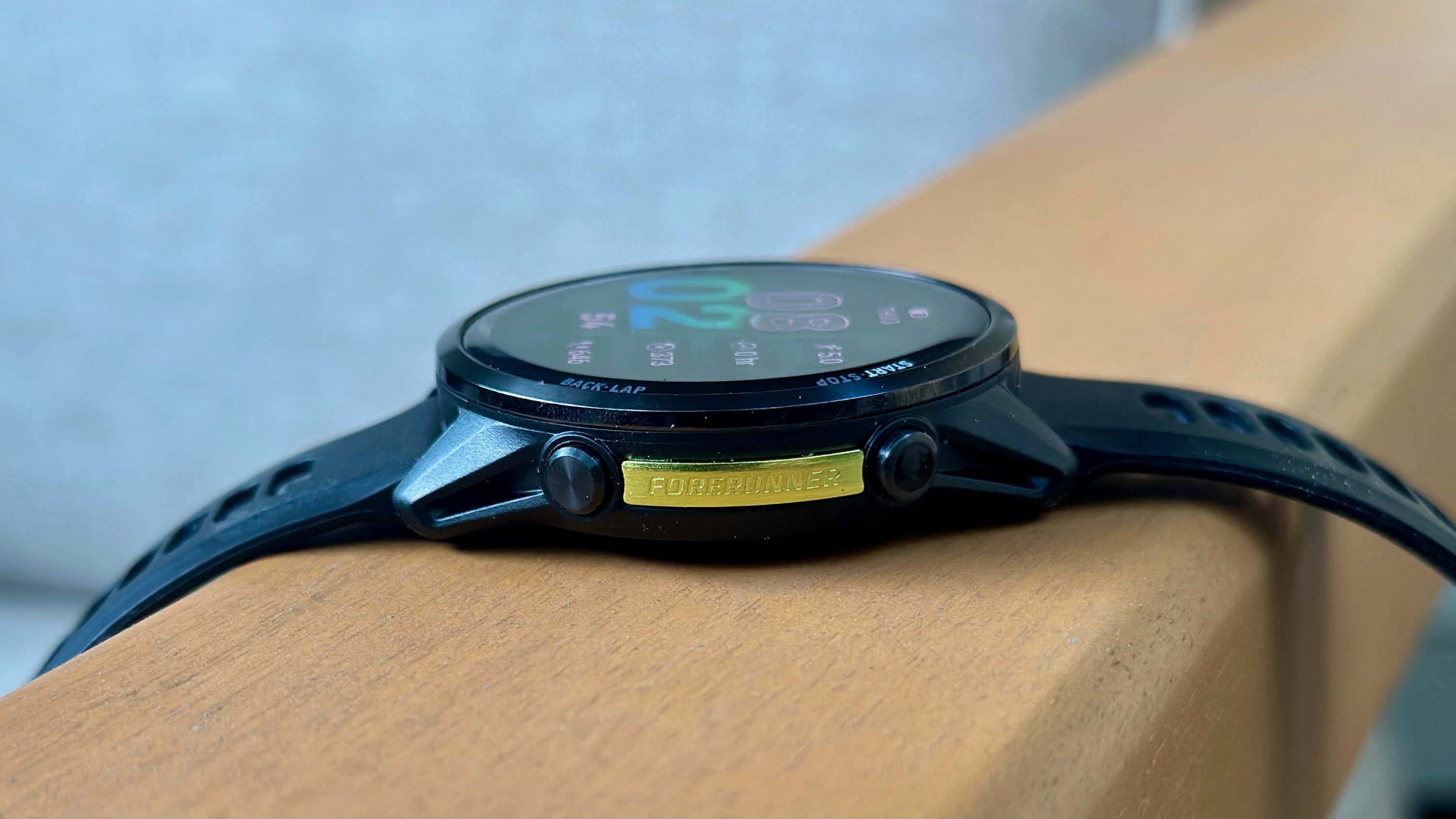
- The gorgeously bright display is more readable but guzzles more battery.
- Its design is lighter but more forgettable and less durable than a Fenix 8, with no smaller option
- The new built-in flashlight is a nice emergency option.
Garmin hasn't changed the Forerunner look in years. The five buttons ensure it'll never blend in as a "normal" smartwatch, and the polymer body prioritizes lightness over style. It's the trade-off Garmin users accept for easier on-the-run controls.
Garmin sent me the all-black Forerunner 970; its titanium bezel and metal buttons shine subtly, the golden "Forerunner" logo the only standout. It's the default option if you want your watch to blend in for professional contexts.
Choosing lighter colors like French Grey or Whitestone accentuates the titanium elements and overall sporty style, which running nerds will love, but others may find them toy-like or garish.

The Forerunner 970 only weighs 3g more than the Forerunner 965 despite the flashlight and mic/speaker, and it measures 0.3mm thinner. Although it may not be as durable as the dive-certified Fenix 8, you'll likely adapt to the 970's weight more easily.
Speaking of the display, the doubled brightness is a serious highlight, answering my Fenix 8 complaint that its AMOLED display is too dull and foggy in sunlight. The Forerunner 970 and 570 are more vibrant, making outdoor use a pleasure instead of a chore.
The downside is that these brighter displays drain the battery more quickly, so the Forerunner 970 hits 15 days or less, trailing the 965's 23-day max. However, the 970 matches the 15-day Forerunner 955 with its dull MIP display, which puts this downgrade into context: it's still respectably long-lived.
With sapphire glass added, too, Garmin's only display weak point is that its refresh rate is not nearly as smooth as most 60Hz smartwatches; expect some lag when scrolling.
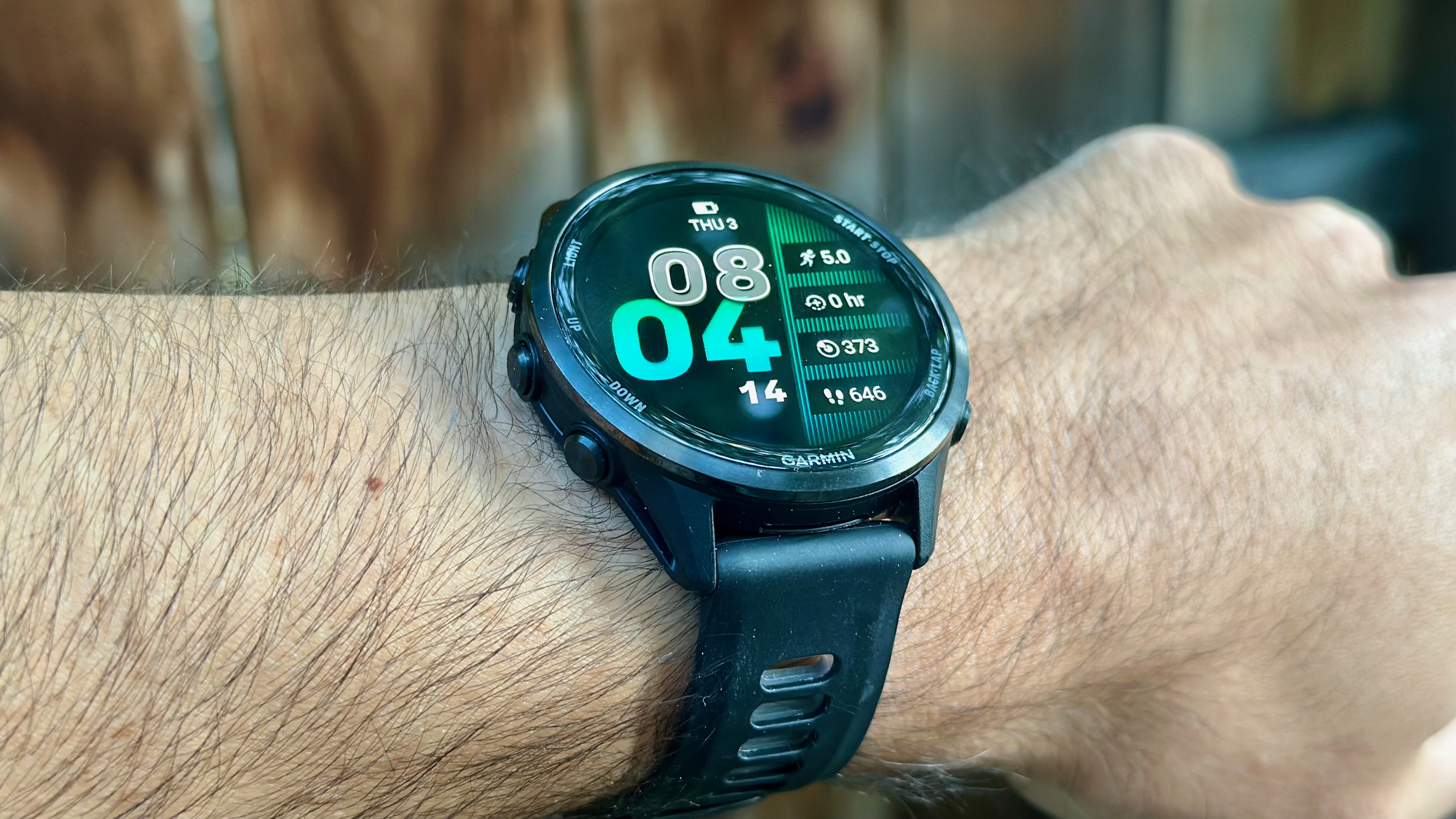
Garmin Forerunner fans have asked for a built-in flashlight for some time. The Forerunner 970 finally delivers, with the same brightness levels — four white and one soft red, strobe patterns, and emergency distress pattern as the Fenix 8 and Instinct 3.
This flashlight is awkward to use during runs because you must hold your arm perpendicular to aim the light forward; it burns through battery quickly, and its brightest setting can only illuminate so much. So, I consider it an excellent backup option to signal your position and prevent falls. You'll still want a proper flashlight or headlamp for regular nighttime or early-morning runs.
Garmin Forerunner 970: Hardware & battery
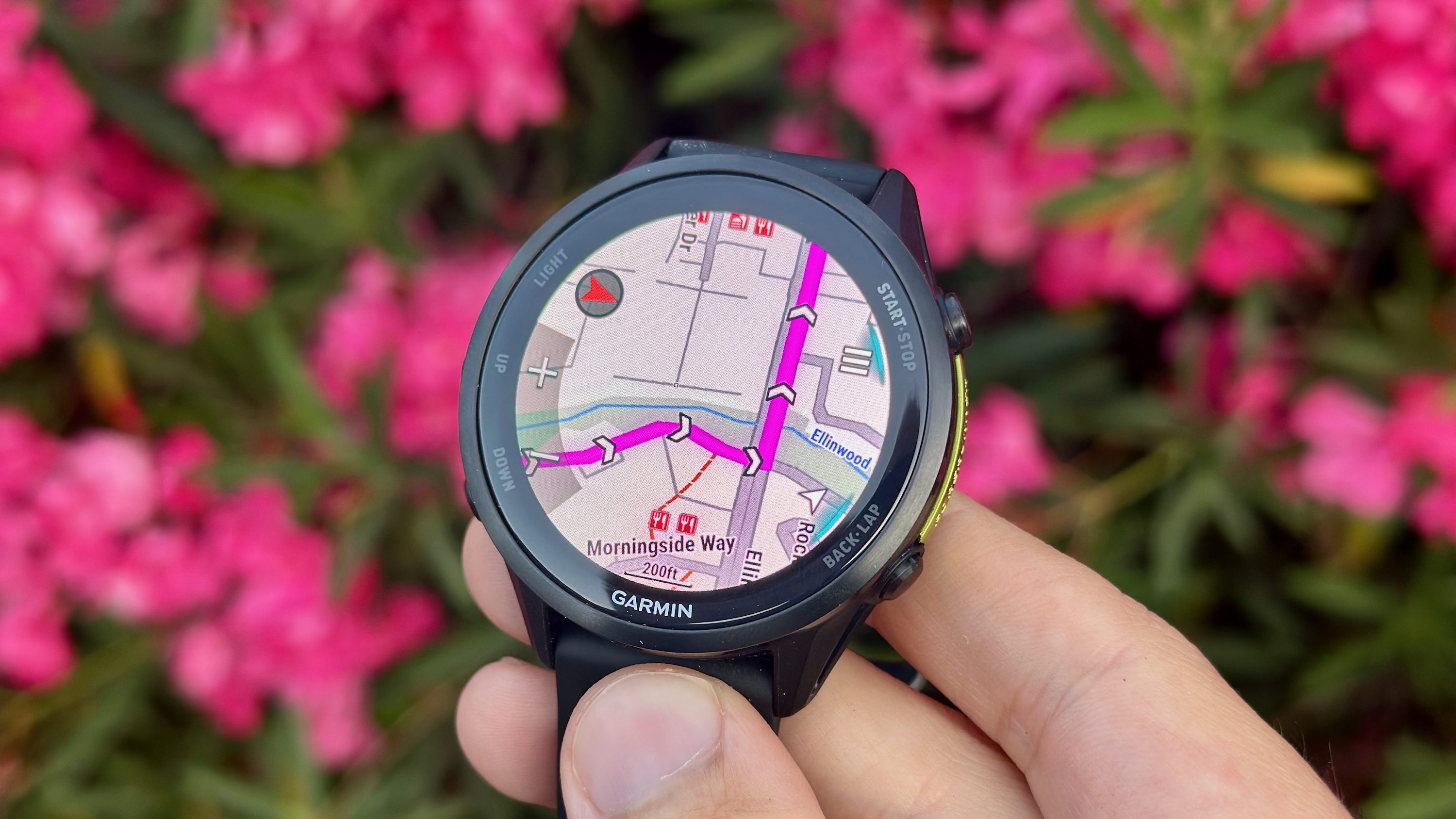
- Garmin's processor is fine for normal tasks but can get overwhelmed by maps
- The Voice Assistant needs work
- Battery life is as strong as advertised, unless you crank the brightness or use AOD
Garmin watches have a leg up over other running watch brands like COROS, Polar, and Suunto for watch smarts. Garmin Pay and downloadable music app playlists from Spotify, YouTube Music, and Amazon Music might seem pedestrian, but its rivals don't offer them.
It's also nice to finally have a mic and speaker in a Forerunner to make a quick call or voice reply on my wrist mid-run. The mic quality is quiet but clear, catching your voice with a normal walking motion but sounding best held up to your mouth; the speaker at max volume also picks up the other caller coherently in windy outdoor conditions.
The processor is optimized to handle all on-watch tasks fairly quickly, though slower than a smartwatch with proper RAM. But it notably struggles with offline maps. Zoom in or out, pan to a new area, search for nearby landmarks or generate a round-trip route on the watch, and it's a painfully slow wait. I rely on the Connect mobile app to create and upload routes instead.
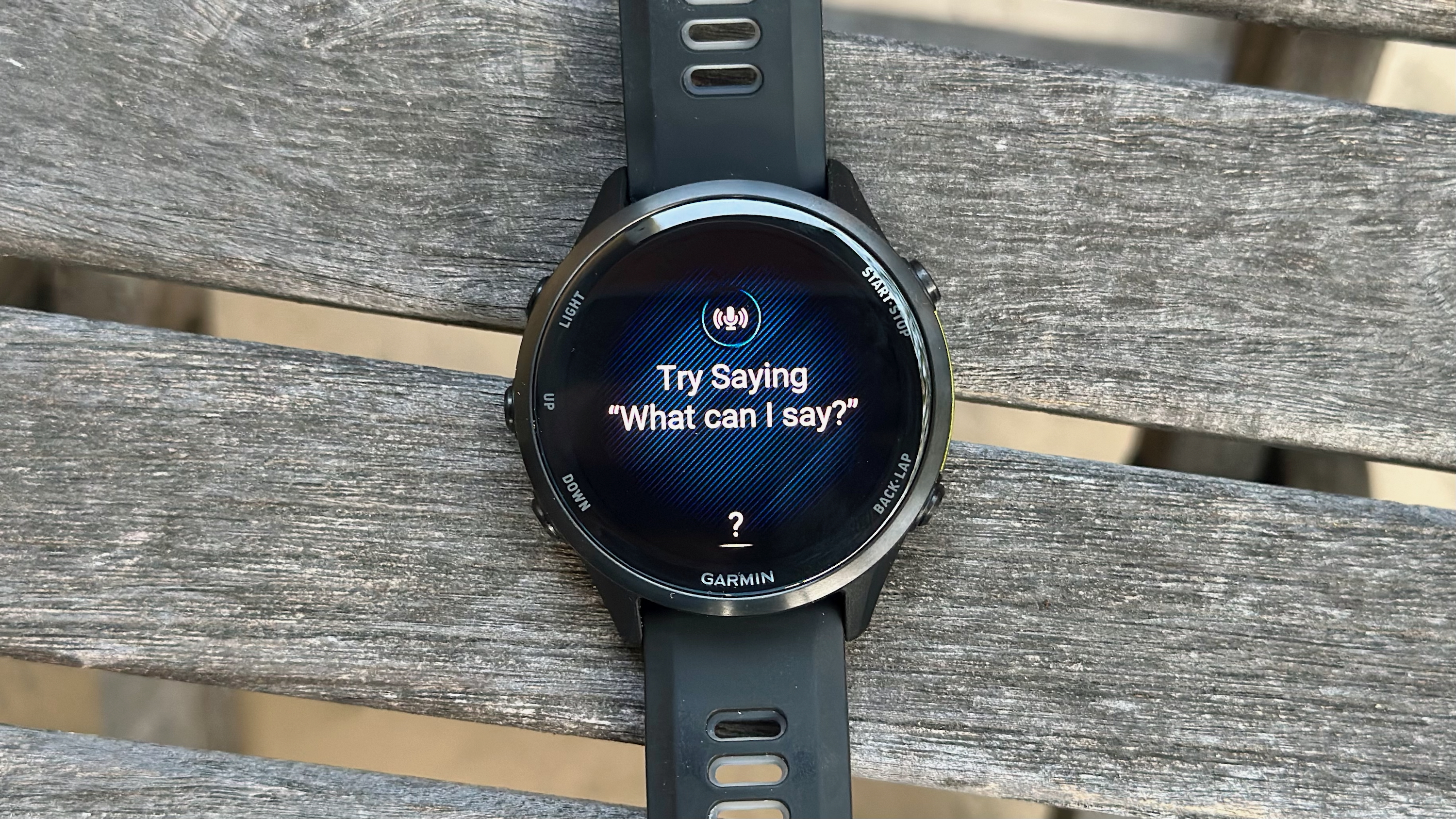
Like the Fenix 8, the Forerunner 970 supports passthrough phone commands (Siri or Google Assistant/Gemini) and an on-watch Voice Assistant with "natural speech" commands to open an app, menu, or activity.
Unfortunately, it's liable to errors and leaps of logic: "Show VO2 Max" opened the Intensity Minutes widget, "Training Load Focus" could only show the general Training Status menu, and "Run Settings" started a Run or opened general settings. It also misinterprets clearly enunciated words, opening an "XC Ski" activity when I said "Connectivity settings."
I don't need Garmin to match Gemini on Wear OS, but I do want this to get better at pulling up exact stats and settings to avoid menuing. For now, I rely more on Garmin's classic button shortcuts.
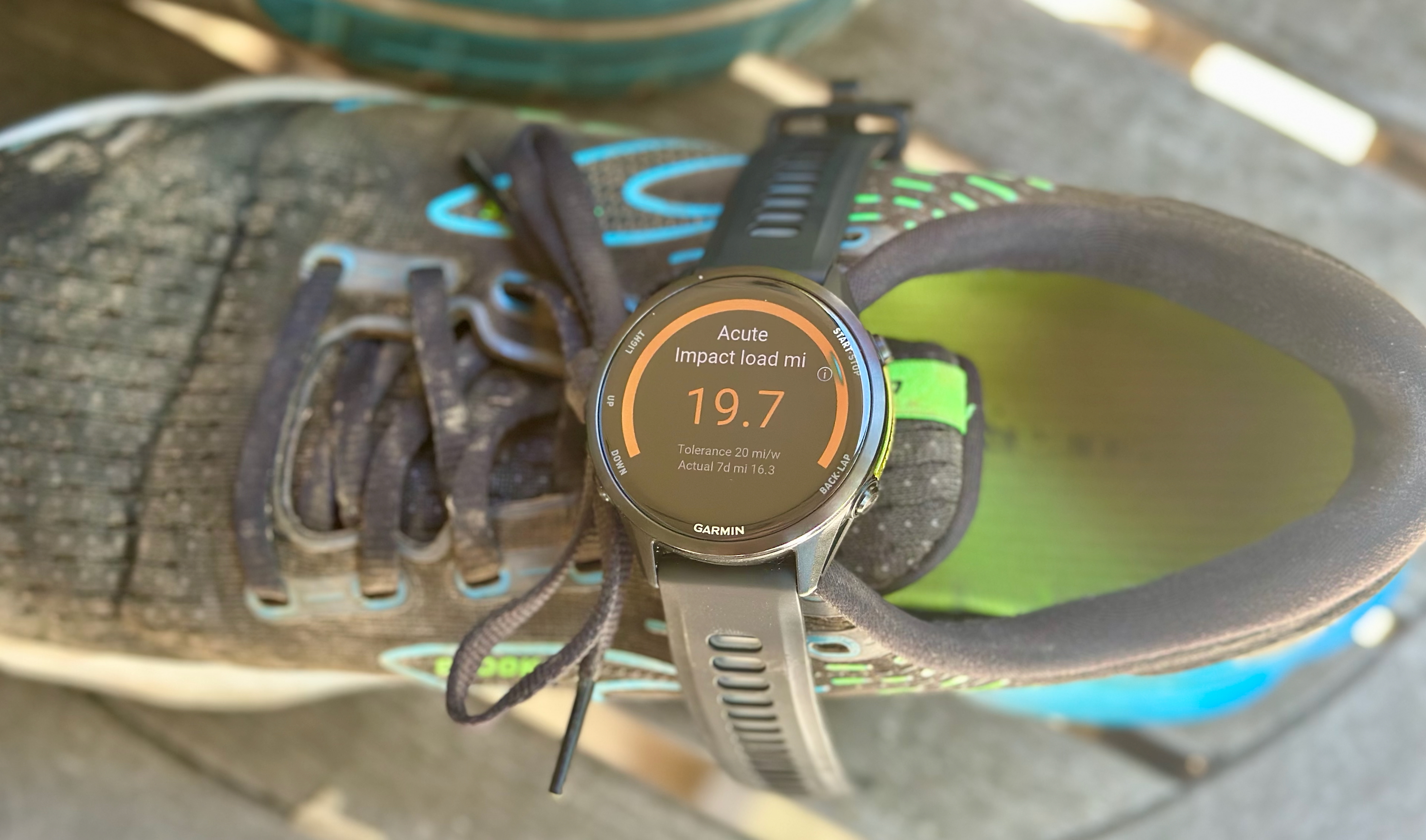
Ultimately, this limited processor is the backbone of Garmin's trademark battery life efficiency. The fact that this watch is barely heavier than past models, lasts two weeks with enhanced brightness, and only seems to struggle with maps is a sign of how well-optimized it is.
After a month, the Forerunner 970 battery life has matched my expectations when set to the default 2/3 brightness. It'll last 15 days with normal settings but fall closer to 10 days if you do regular GPS-tracked runs and walks, enable nightly SpO2 readings, or use maps or on-wrist calling frequently.
An hour of SatIQ-mode GPS uses up about 4–5% of the battery, but that's fairly standard for Garmin watches. The display is the real battery killer, especially if you enable always-on display mode. Garmin says it'll last eight days with AOD, but I'd say half that is more accurate.
My advice is to stick with tilt-to-wake. You can adjust the brightness settings to the old 1,000-nit standard if you miss the 965's three-week battery, but I've accepted more regular charging for the visibility boost.
Garmin Forerunner 970: GPS & HR accuracy
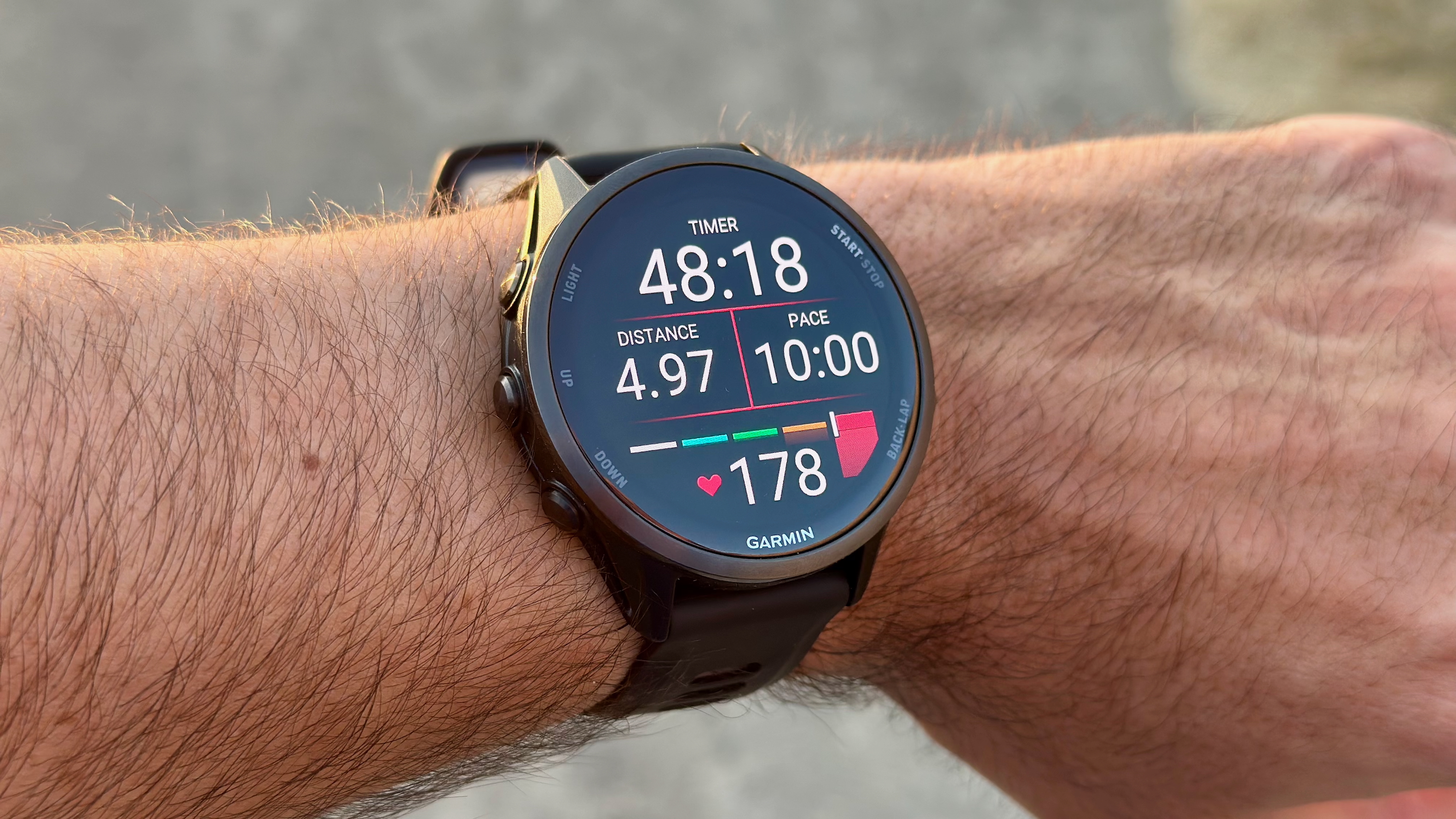
- Multiple accuracy tests proved that the Forerunner 970 is highly accurate for GPS and HR data.
- The Forerunner 970 has Garmin's full health suite, including blood oxygen, breathing rate, HRV, ECGs, and skin temp.
I previously performed a Forerunner 970 fitness test, breaking down its HR, GPS, and step count accuracy across multiple tests. The crux is that the Forerunner 970 is as accurate as a $750 watch should be.
For heart rate, the Elevate v5 sensor is Garmin's most accurate option, and it shows. It does very well for normal runs, only inflating my HR by about 1 bpm at times. For anaerobic track workouts, it remains within 1–2 bpm of my Polar H10 chest strap, rapidly recognizing changes in effort; many competing brands will be 5–10 bpm off for the same activity type.
GPS tracking is fantastic, particularly the dual-band GPS mode, which allows you to trace your path exactly on a satellite map. The SatIQ mode also works well and saves a few hours of battery, but can struggle more with obstacles like underpasses.
Its step counting was absurdly accurate, measuring 5,000 and 5,001 steps after I manually counted 5,000 steps twice. Barring the occasional false-positive step, it's top-class.
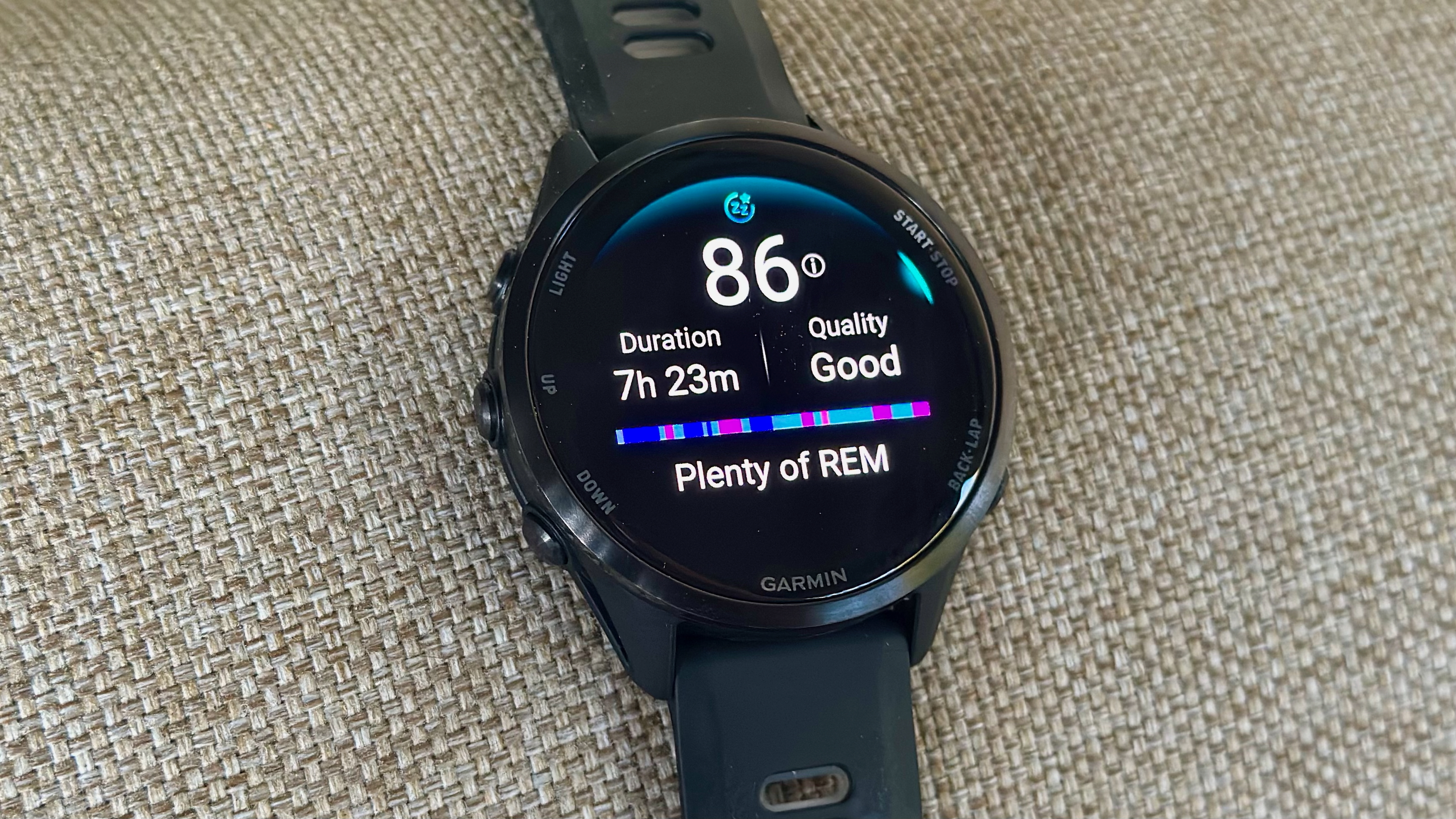
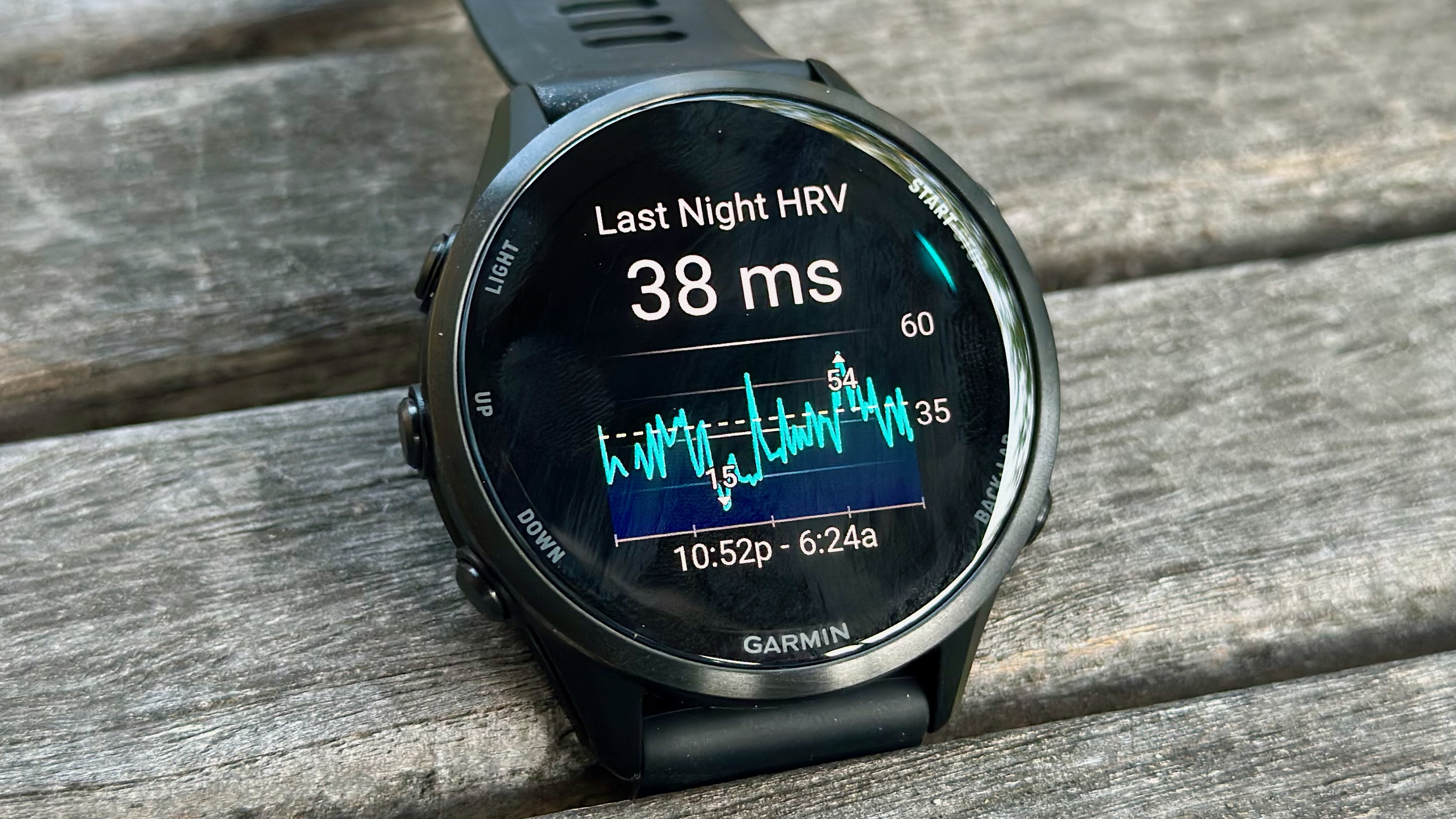
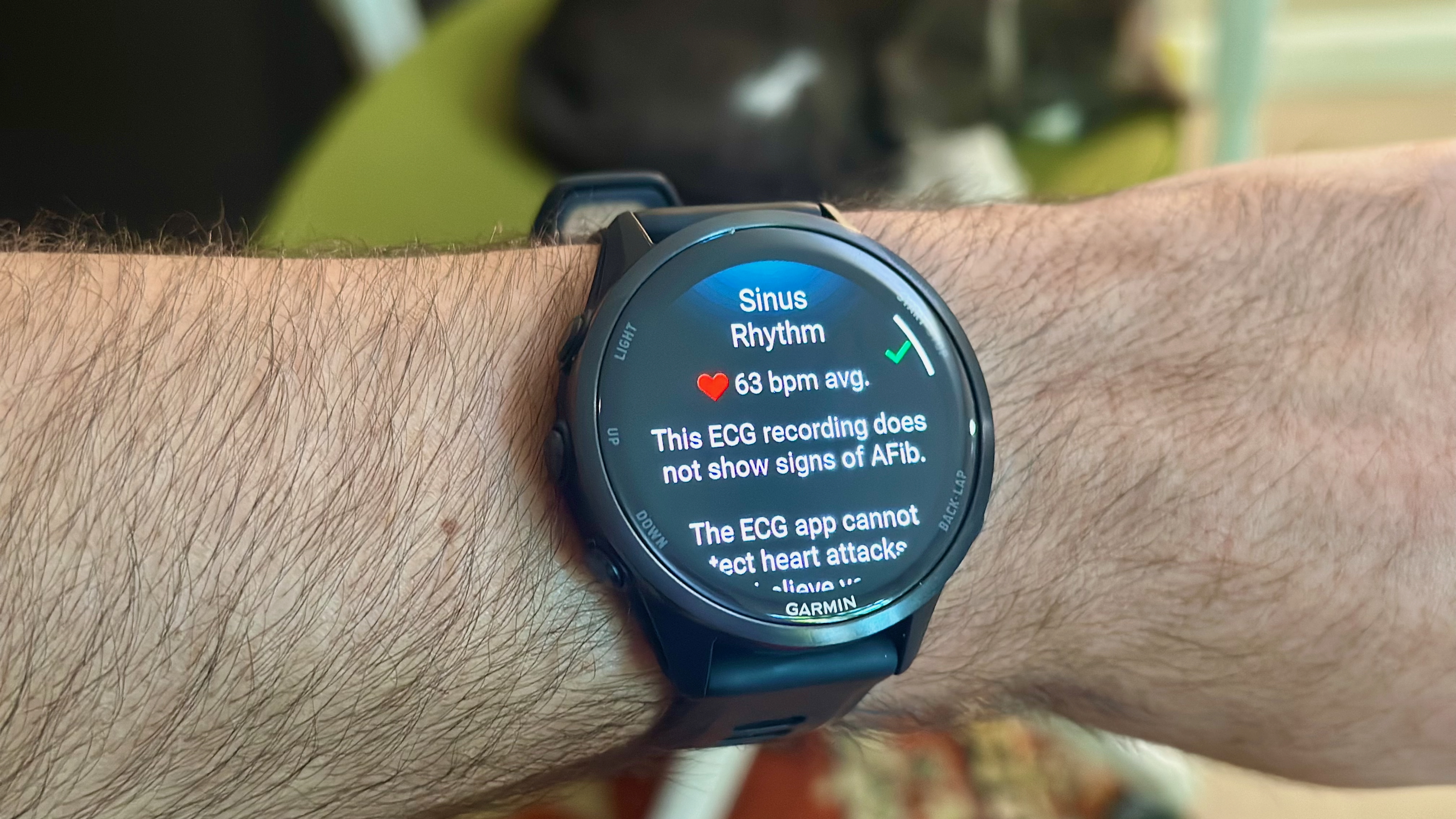
Outside of workouts, the Forerunner 970 has Garmin's trademark suite of health and sleep data. Highlights, as always, are Body Battery, Training Status/Readiness, HRV Status, and nightly Pulse Ox data. You get a holistic look at the source of your tiredness, from workouts and poor sleep to breathing issues.
While Garmin watches don't offer "sleep apnea detection" like Galaxy Watches, they have the battery life for all-night pulse ox readings. Frequent breathing variations or a low minimum SpO2 score will warn you to see your doctor.
Specific to the Forerunner 970, you can take active ECGs to detect AFib issues — though there's no passive irregular heart rhythm tracking, as Fitbit, Apple, and Samsung offer. And skin temperature variation warns you if your body strays too far from your baseline.
Garmin Forerunner 970: Software & training
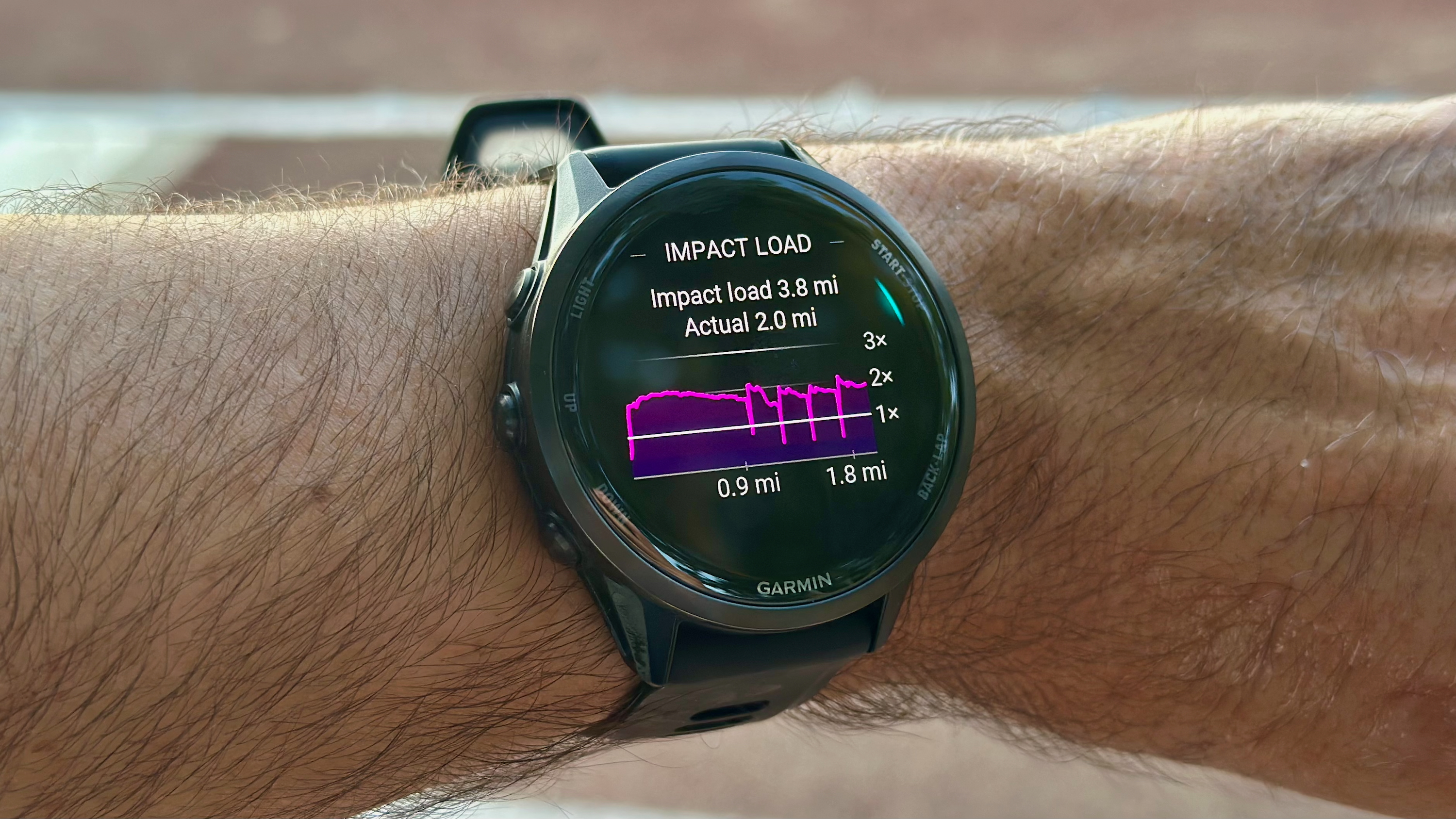
- Running tolerance is the best Forerunner 970 exclusive
- Other new exclusives are more niche, while old 965 tools like offline maps and endurance score remain compelling
Many of my favorite Forerunner 970 features appear on the $450 Garmin Forerunner 265 (training load focus, daily suggested workouts, recovery time) or $600 Forerunner 965 (ClimbPro, Endurance Score). They're what make Forerunners so vital for runners like me, but I won't bloat this review with non-exclusive features. These are the Forerunner 970 software highlights:
Running tolerance is my absolute favorite Forerunner 970 tool. It judges the biomechanical "impact load" of each mile, recognizing that a hilly trail or hard track run puts more strain on your body's joints and muscles than normal. Then, it judges your body's weekly impact load limit, or tolerance, to prevent overtraining. I already rely on this data when planning workouts.
I couldn't test the 970's other new metrics, running economy and step speed, because I don't have the HRM-600 chest strap required to measure my running form efficiency and wasted energy. Since intentionally changing your running form doesn't work, these metrics only provide context, not anything actionable for training.
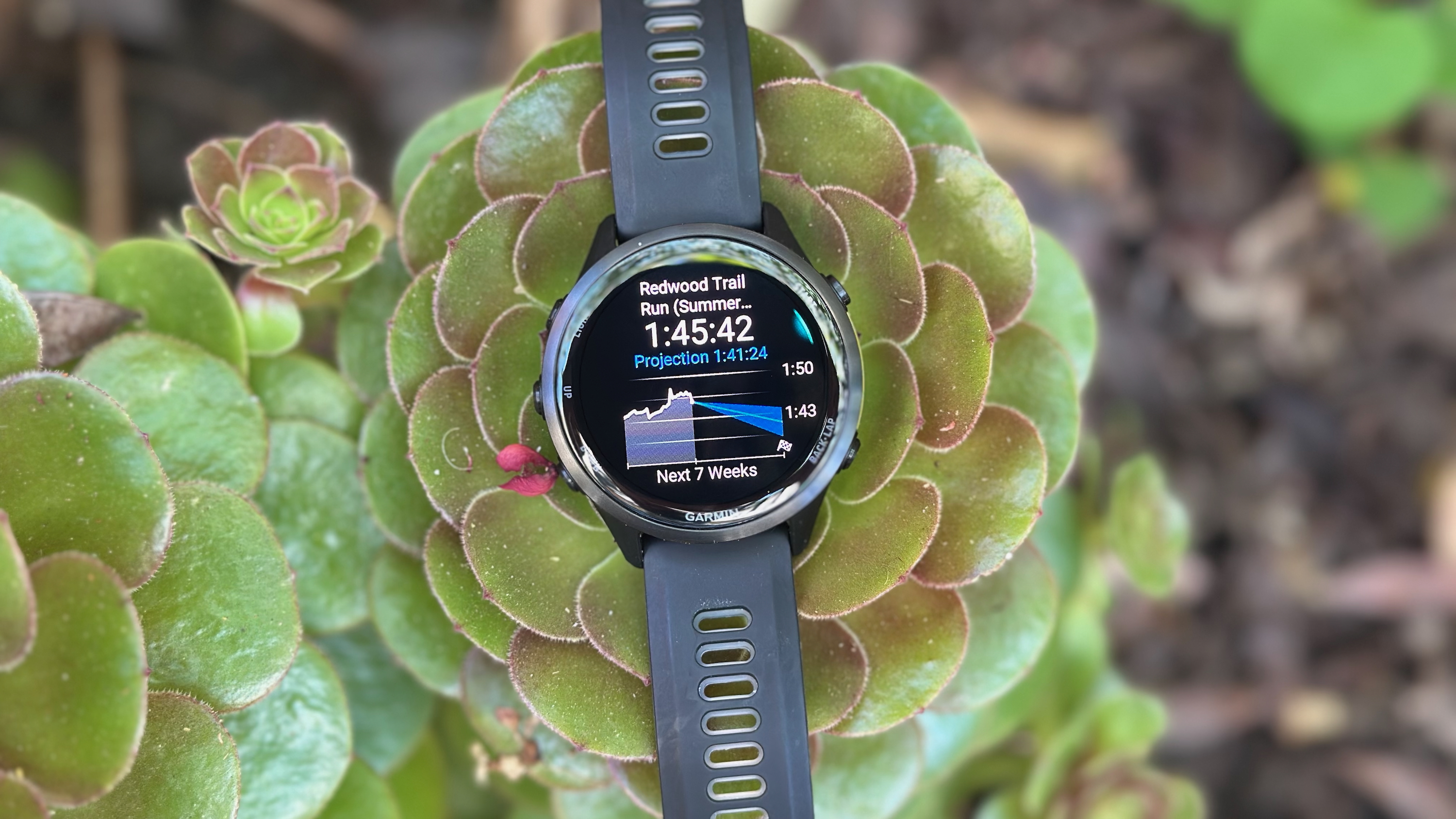
Schedule a race in your Garmin Calendar, and the projected race time predictor shows how fast Garmin's algorithm thinks you could run it in X weeks if you stick to its training plan. I found its prediction for my next half marathon wildly optimistic, but maybe I'm just not pushing hard enough.
If I pre-download my race course, the Auto Lap by Timing Gates tool will only trigger a "mile" or "kilometer" lap when I pass the physical mile marker. It's easy to run more than a mile without the perfect line; this eliminates the gap and shows your "real" race pace instead of your GPS-based one.
Also, if you forget to stop an activity at the finish line, Suggested Finish line lets you go back and edit it to the correct stopping point, cutting out your post-run cooldown.
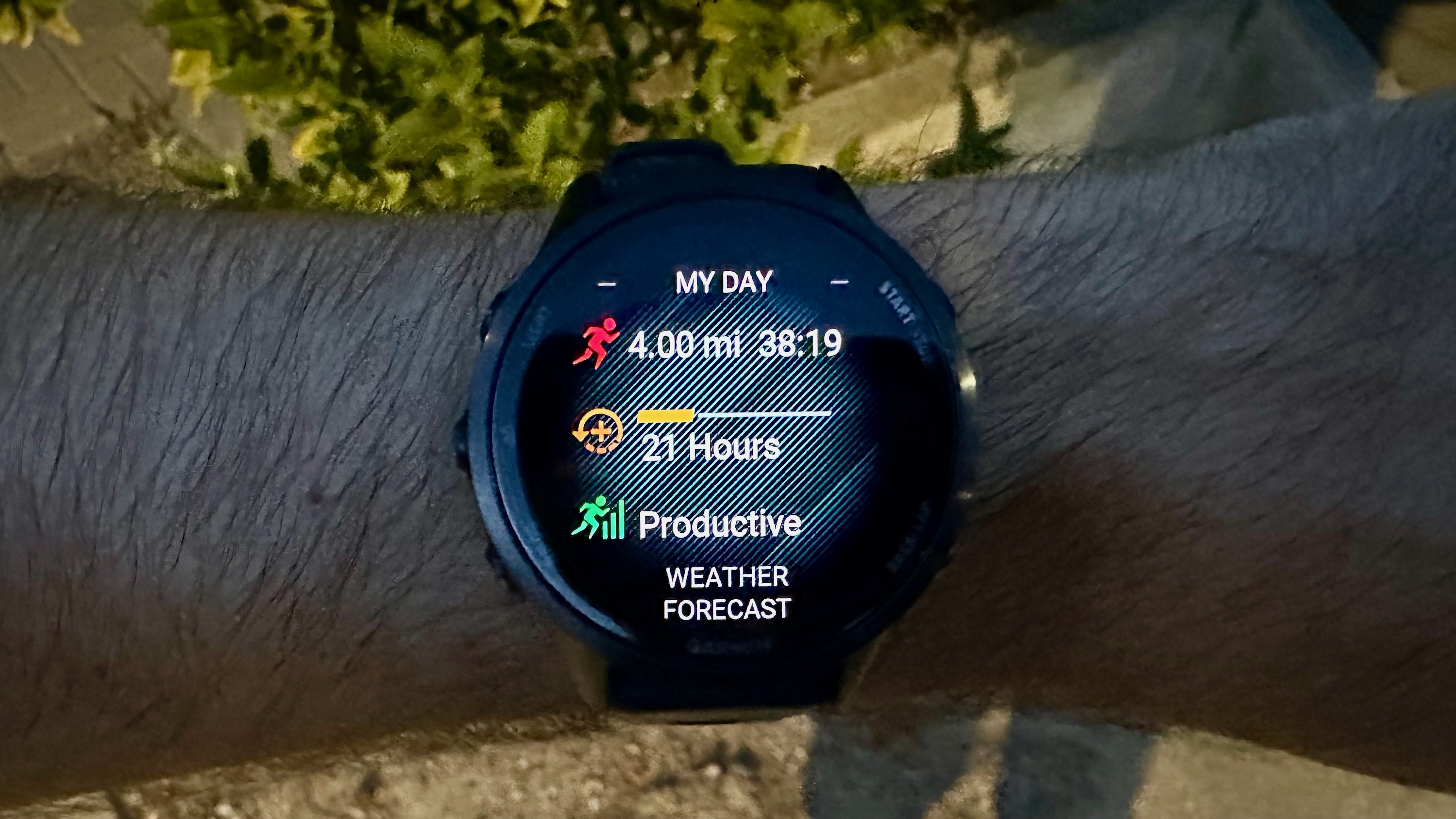
I find the new Evening Report more useful and motivational than the Morning Report. It lets you review your steps and activities from that day, check tomorrow's forecast and suggested workout early, and mentally remind yourself to get your butt in bed if you're planning to run early.
There are other exclusive perks: new sports modes, focus modes, triathlon coaching, and a more modernized UI than the 965, which groups widgets into better categories and makes apps easier to find.
However, I ultimately believe that running tolerance is the one vital tool that runners will want. That alone isn't worth $750, but combined with the other upgrades, it may be enough for some runners.
Garmin Forerunner 970: Competition
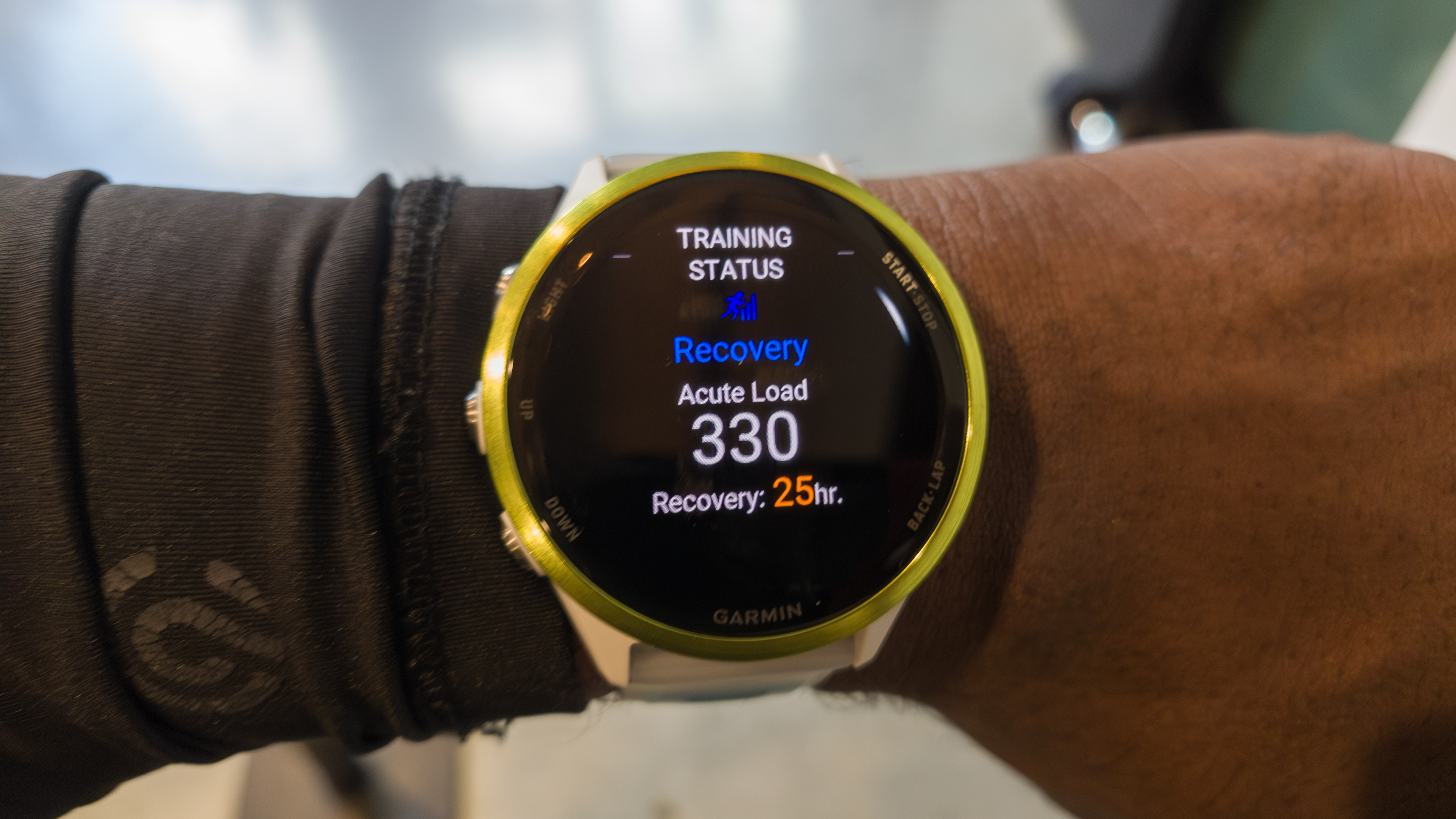
Garmin's "product compare" data tool lets you directly check every key difference in hardware and features between watches. I've linked to guides for the Forerunner 970 vs. Fenix 8, Forerunner 970 vs. 965, and Forerunner 970 vs. 570 that will run through all the changes and upgrades you can expect.
The Forerunner 570 sheds the ECGs, flashlight, sapphire glass, titanium bezel for aluminum, offline maps, running tolerance, hill and endurance scores, Strava live segments, advanced cycling dynamics, and four days of battery life. It's essentially a revamped Forerunner 265 with double the brightness, a microphone/speaker, and improved HR accuracy, paired with the same GPS accuracy and vital training load guidance.
Outside of Garmin watches, you won't get the same longevity, but you will get superior smarts and mapping out of an Apple Watch Ultra 2 or Galaxy Watch Ultra.
Garmin Forerunner 970: Should you buy it?
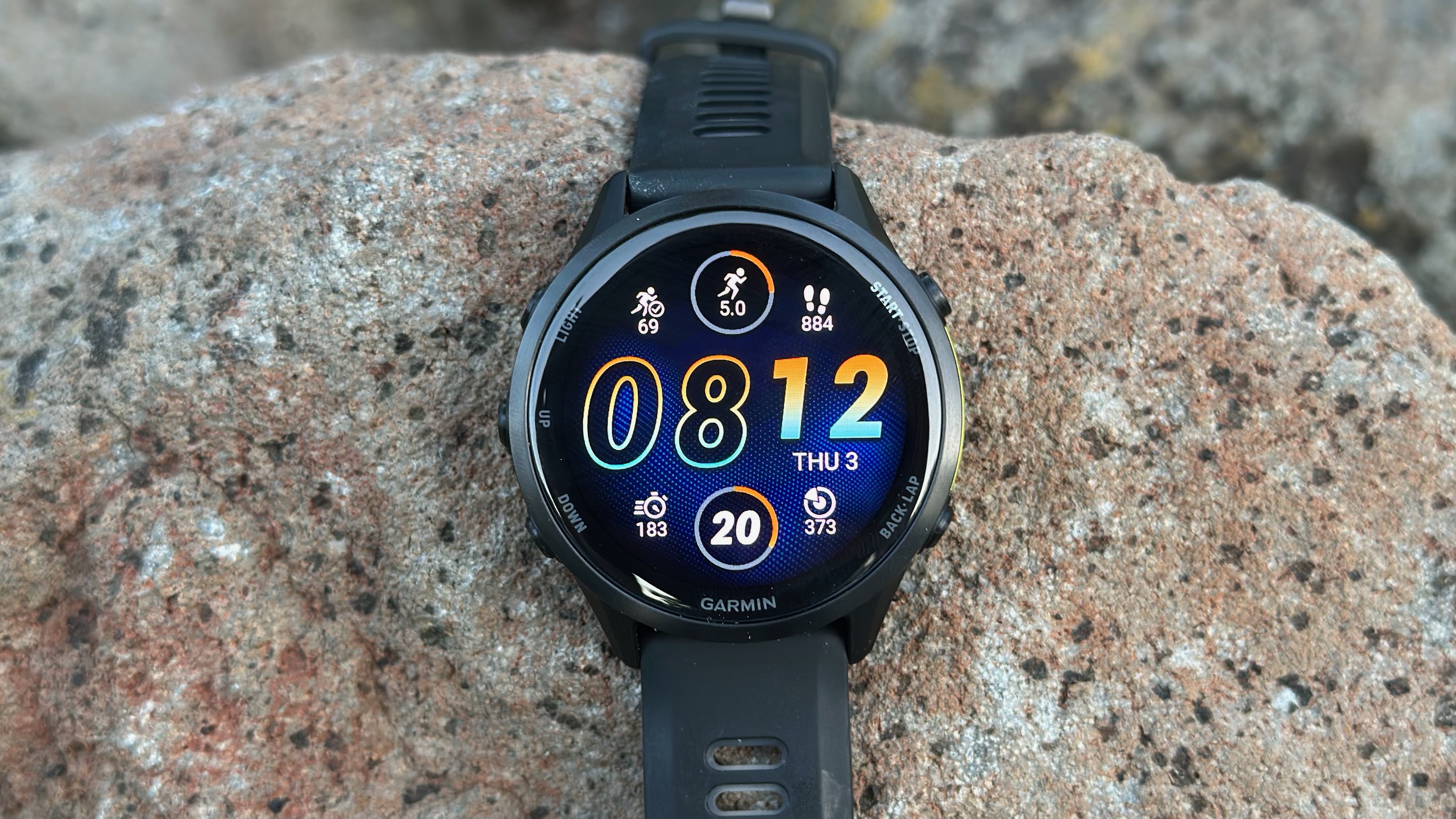
You should buy the Garmin Forerunner 970 if...
- You want a watch that judges cardiovascular and biomechanical load for planning workouts.
- You want the smarts of a Fenix, but don't need WatchOS or Wear OS smarts.
- You want long battery life but not the best possible life.
You shouldn't buy the Garmin Forerunner 970 if...
- You're not a serious runner, cyclist, or triathlete.
- You can settle for the features of cheaper Forerunners.
As I mentioned initially, this is a fantastic watch that takes the 965 template and adds the missing smarts, improved visibility, and muscular load data that it previously lacked. It has industry-leading accuracy and a great training algorithm, while its smarts are below average but steadily improving.
Unfortunately, most people aren't sent a $750 watch for review; you have to weigh whether these new features are compelling enough or if you can live with the Forerunner 570 or 265 — both excellent running watches if you don't need bells and whistles.
But if you're weighing the Forerunner 970 against the Fenix 8, I'll wholeheartedly recommend the former. Save yourself some money (relatively speaking) and still receive a premier Garmin experience.
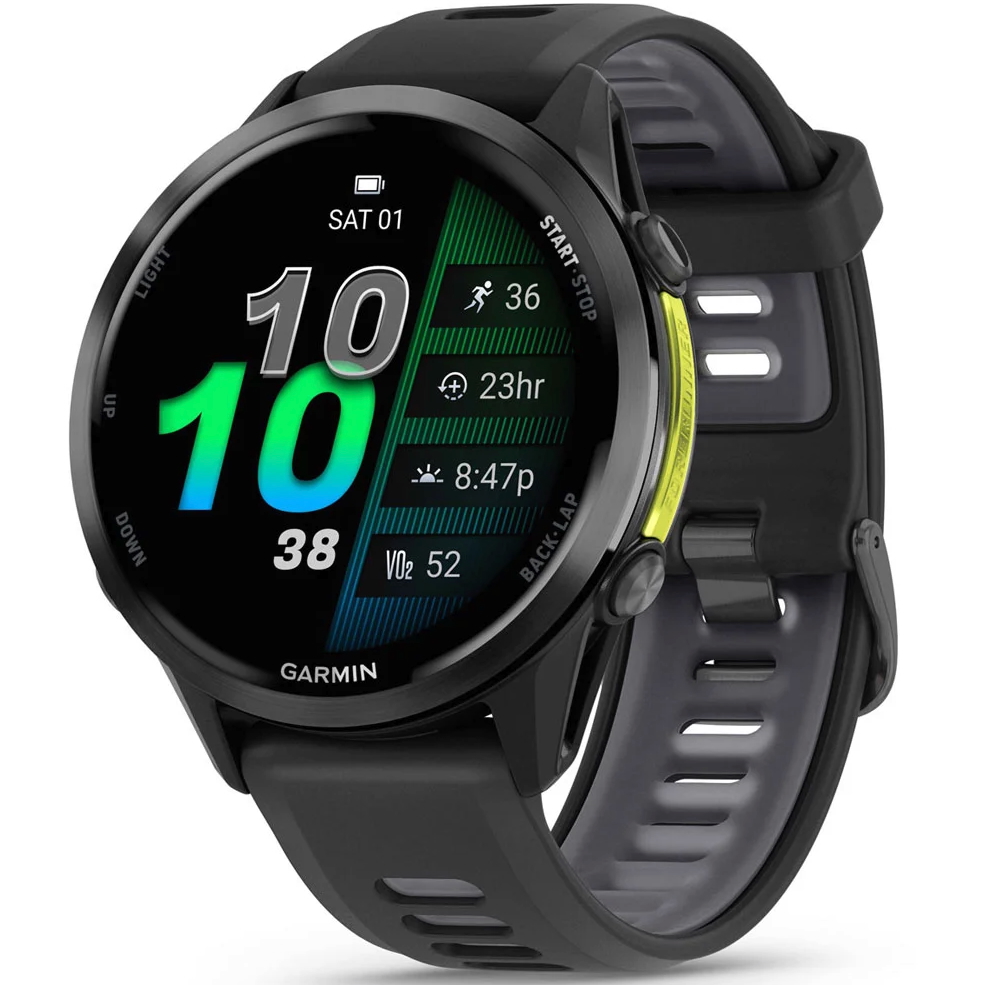
The Garmin Forerunner 970 has bloated to incorporate nearly all of Garmin's best tools and hardware from the past decade. At the core, though, it's just an accurate running watch that lasts up to two weeks per charge and will give you daily advice on how hard to push, until you've improved as a self-guided runner.

Michael is Android Central's resident expert on wearables and fitness. Before joining Android Central, he freelanced for years at Techradar, Wareable, Windows Central, and Digital Trends. Channeling his love of running, he established himself as an expert on fitness watches, testing and reviewing models from Garmin, Fitbit, Samsung, Apple, COROS, Polar, Amazfit, Suunto, and more.
You must confirm your public display name before commenting
Please logout and then login again, you will then be prompted to enter your display name.
